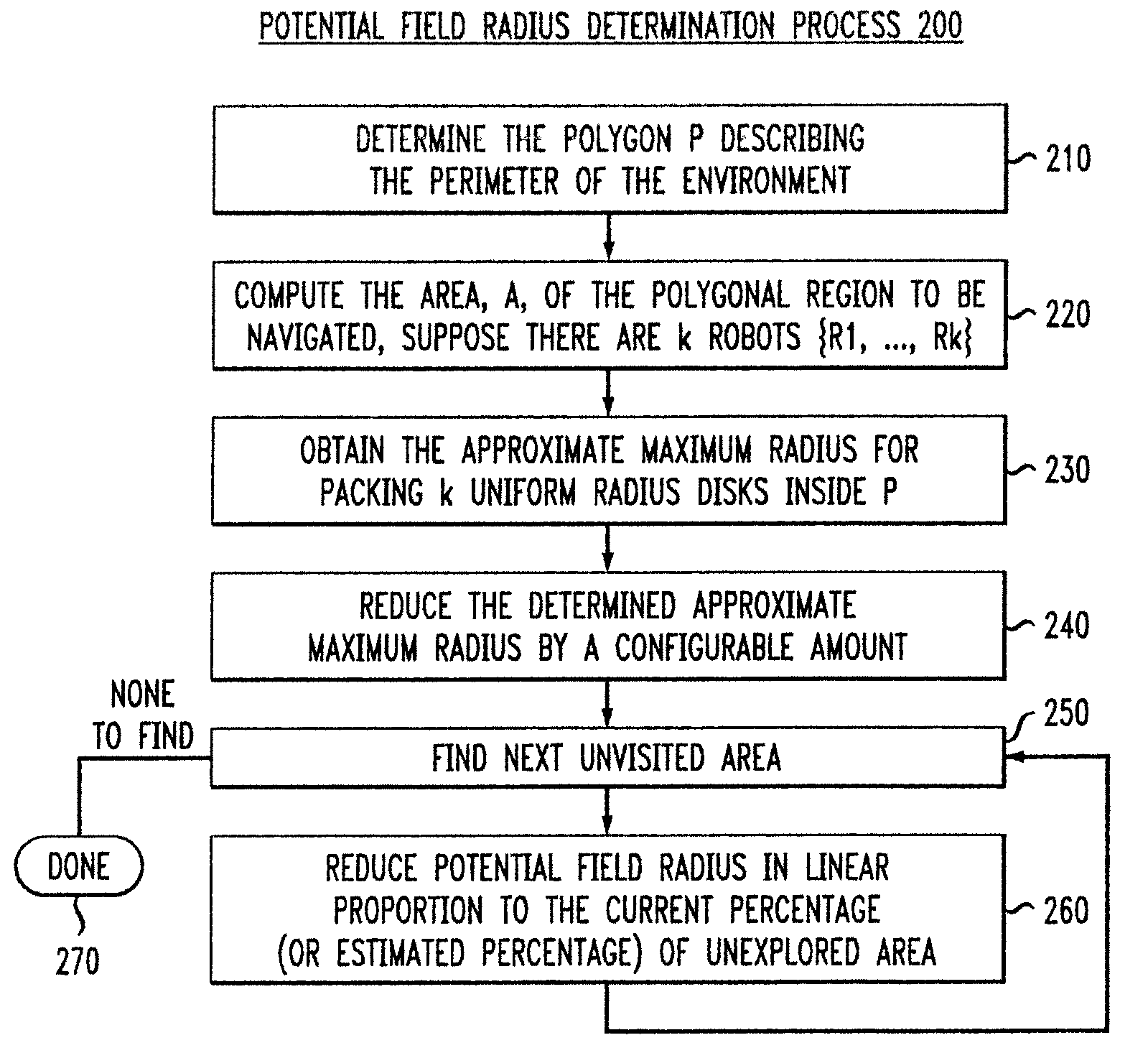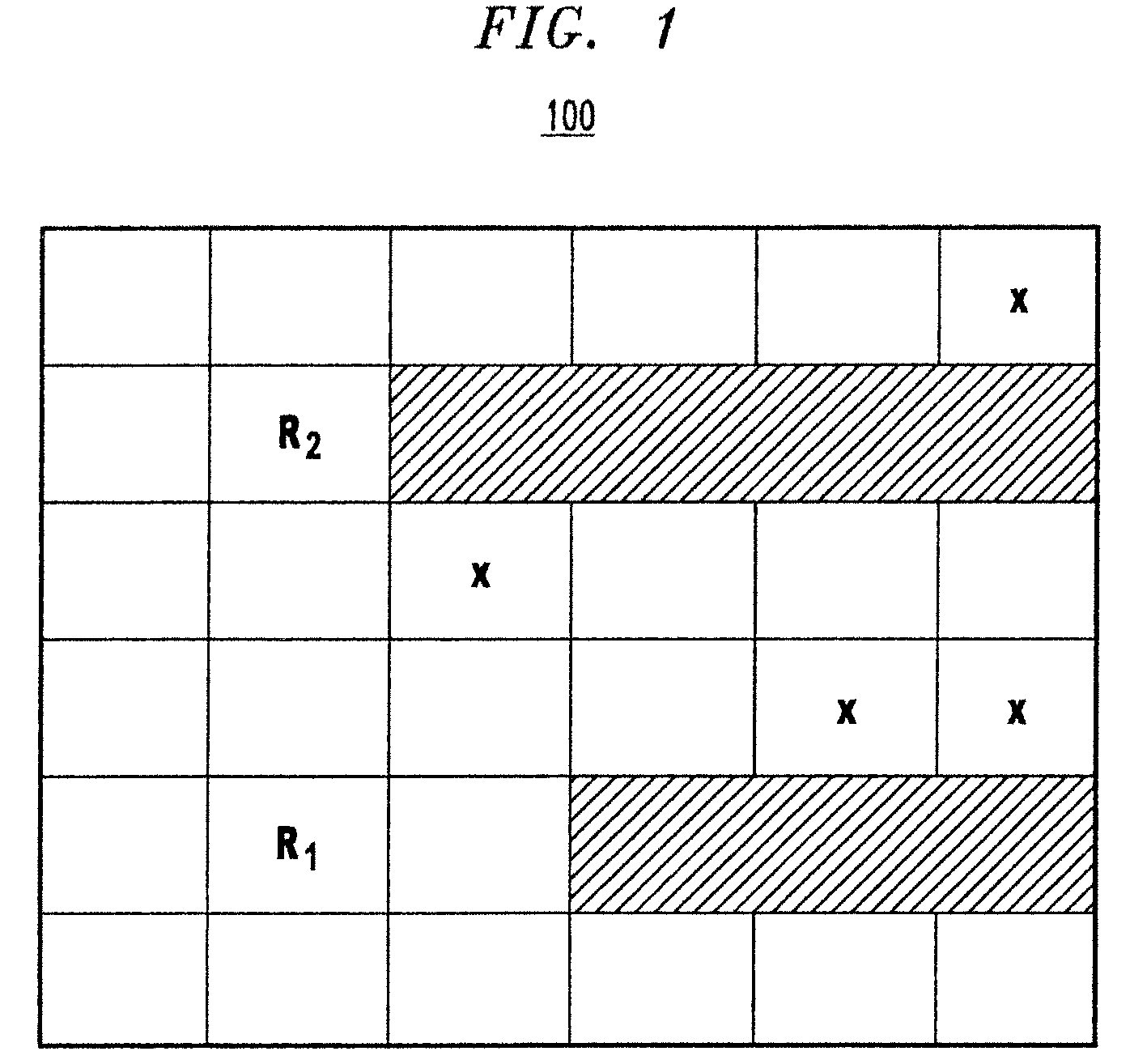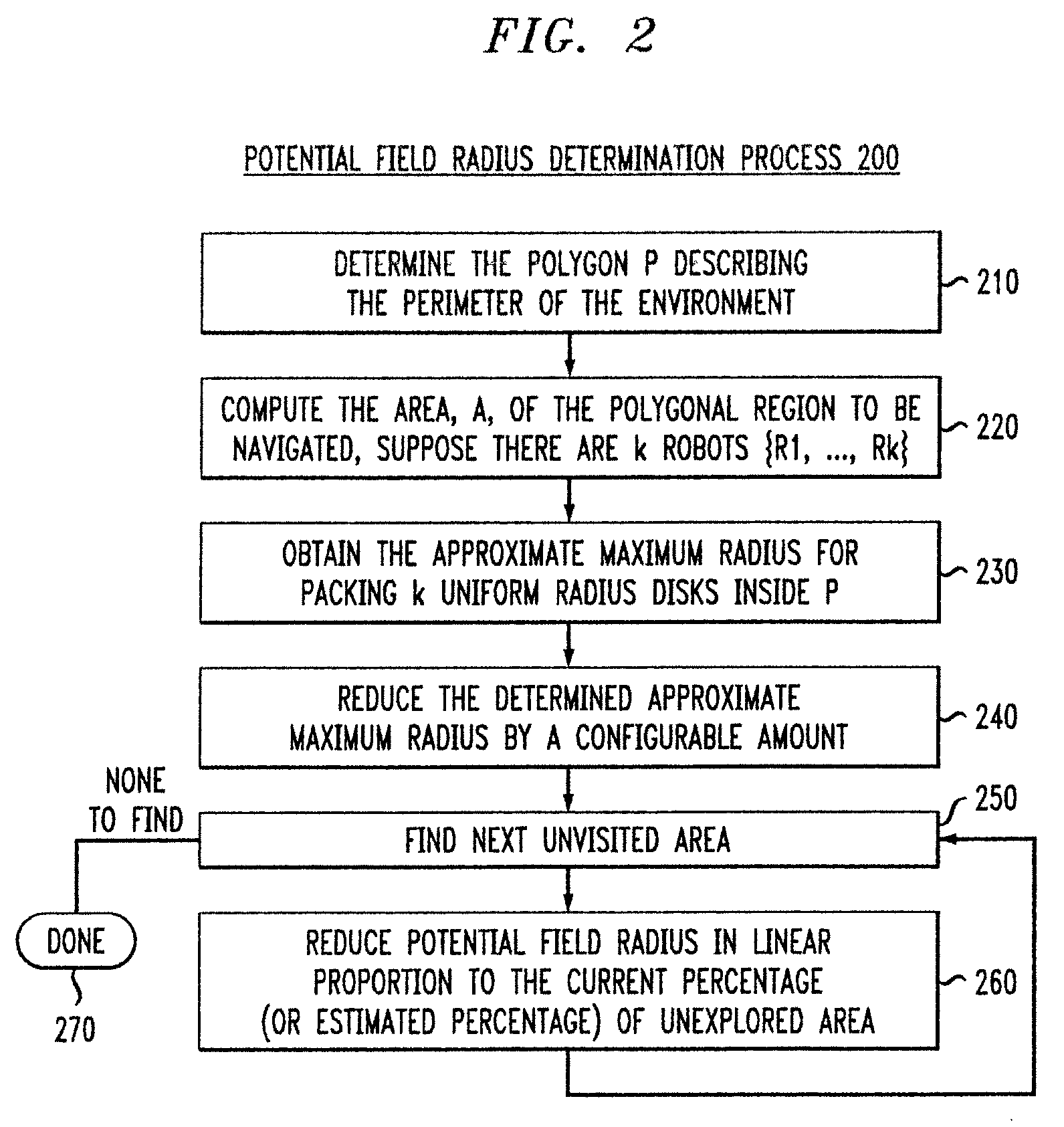Discovery and monitoring of an environment using a plurality of robots
a robot and environment technology, applied in the direction of instrumentation, electric programme control, program control, etc., can solve the problems of destroying the financial benefits of saving energy, data centers consuming ever more energy, and challenging a plurality of robots to efficiently navigate an indoor environmen
- Summary
- Abstract
- Description
- Claims
- Application Information
AI Technical Summary
Problems solved by technology
Method used
Image
Examples
Embodiment Construction
[0017]The present invention provides improved multi-robot navigation in previously known and also previously unknown environments. According to a varying potential field aspect of the invention, multi-robot navigation of known and unknown environments is improved by varying the radius of the potential field based on the percentage of area that remains to be explored in a known environment, or the estimated percentage of area that remains to be explored in an unknown environment. The potential fields are also referred to herein as “navigation buffers.” Generally, the radius of the exemplary potential field decreases as the percentage (or estimated percentage) of the indoor environment that remains unexplored decreases. While the varying potential field aspect of the invention is illustrated using circles having substantially uniform radii around each robot, navigation buffers of any shape and of varying sizes can be established around each robot, as would be apparent to a person of o...
PUM
 Login to View More
Login to View More Abstract
Description
Claims
Application Information
 Login to View More
Login to View More - R&D
- Intellectual Property
- Life Sciences
- Materials
- Tech Scout
- Unparalleled Data Quality
- Higher Quality Content
- 60% Fewer Hallucinations
Browse by: Latest US Patents, China's latest patents, Technical Efficacy Thesaurus, Application Domain, Technology Topic, Popular Technical Reports.
© 2025 PatSnap. All rights reserved.Legal|Privacy policy|Modern Slavery Act Transparency Statement|Sitemap|About US| Contact US: help@patsnap.com



